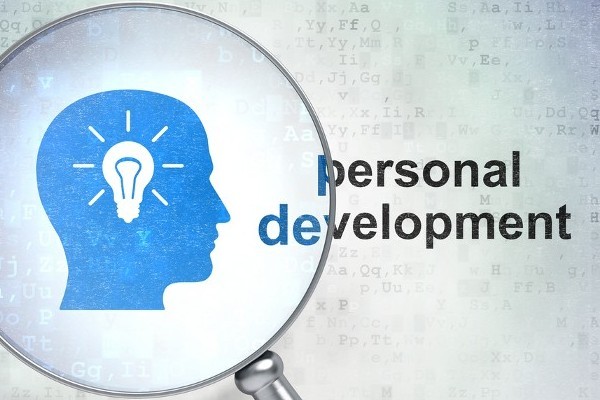- Friday 17 August 2018
A survey from Go2HR has shown that that 40% of employees receiving poor job training leave their positions within the first year.
And according to Rachel Blakely-Gray, payroll and training expert, “Businesses spend an average of 21.4% of an employee’s salary on a replacement. So, if an employee earning €40,000 leaves, you will spend a total of €8,560 replacing them (recruiting and hiring process, onboarding, and training). Help break up the cycle by taking the time to diligently train employees.”*
That’s a no-brainer poorly skilled employees are less productive, make more mistakes and deliver poor experiences for customers.
It can be challenging to manage training and daily skills training in any industry and business, that’s why it is crucial to have a well-defined process in place and to follow it scrupulously. Below are 5 essential steps to build an effective and successful training and development process:

-
Identify training needs
There are two ways of identifying training needs:
-
The formal way
- By analysing the business plan - What are we trying to achieve in the company?
- By gathering customer feedback – What are we doing right or wrong? Do we satisfy our customers?
- Identifying training needs through assessing performance against operational standards.
- By gathering employee feedback – Do your employees have the tools to be productive at work?
- By completing appraisals to identify training needs – What skills need to be developed?
-
The informal Way
- By observing how individuals work and how they interact with customers and with each other’s.
- By discussing with your team and learning how everyone feels at work.
Once you have identified all training needs, it could be useful to gather these needs under clusters of needs. It will be easier for you to manage and a greater number of employees will be provided with the training they need that way.
However, it is very important to adapt your strategy to everyone’s experience and level. For example, if there is a clear need of improving your customer service and experience, then a junior employee might need a basic training about it when a senior manager might need to improve in a particular area of the customer experience.
If you provide the same level of training to an experienced employee as to an entry-level one, it could lead to a lack of engagement during the training and be a waste of time and money. That’s obviously not what you want!
-
Define the budget
This step is crucial to build your case and sell it to senior management. Everyone would agree that as an HR manager, it is unlikely or very difficult to get your ideal budget (and more) so you will need to make decisions and prioritise the company training needs. What’s the priority for the business? For the employees?
You need to balance each employee development needs to make everyone happy. Explain your choices to the senior management as well as the employees and negotiate to have an allocated budget as high as possible.
To obtain the budget you need to sell it as a long-term investment and not as a cost. To do so put mechanisms in place to measure the return on investment in respect of your training budget. Once the management is reassured and convinced that allocating X000€ will have an impact on the long-term, they won’t have any problem thinking that it is worth investing on it.
-
Plan and implement the training
Well done! Your budget has been approved. Now, all is about planning efficiently how, when, where and for how long the training will take place. Will you plan it on a monthly? Quarterly? Yearly basis? Then, make sure that recurrent training is part of your plan on the right time to prevent compliance issues (i.e Manual Handling, HACCP etc…).
It could be useful to plan training on an ongoing basis rather than one-off training days which won’t have the same impact on your teams as a day or half-day training every month or quarter. This way, it enables you to see progress over time and focus on an area for the next session.
Before delivering the training, make sure that everyone is aware that a structured training plan is in place and communicate any necessary details for greater attendance.
-
Deliver the training
A research from the Middlesex University's Institute has shown that “74% of employees feel that they aren't achieving their full potential at work due to lack of development opportunities.” Everyone would agree that this can cost a lot to a business.
That’s why delivering training needs to be perfectly handled to generate the outcomes you expect.
Once the training has been well structured, you need to make sure that it is adequately resourced and that only qualified trainers have been appointed to deliver training, so they can deliver a high-quality training to your team.
You might take enough time to discuss with them and define the outcomes you expect for your employees and make sure that they are well prepared.
If you decide to organise on-the-job training, it needs to be planned, structured and recorded. When is it going to take place? How long it will last? Who will be the trainers? Technology can be used where possible to streamline the management of on-the-job training.
Sometimes, it is not necessarily managers and HODs who are the best people to provide training to your team. A person with natural training or coaching skills can be more effective and provide better training to the team.
And if while appointing your trainers, you identify training needs for them, it will be important to provide them with the relevant tools to deliver great training.
-
Evaluate the training and identify new training needs
That’s it, your employees have been trained but now what? The impact of training provided to your team needs to be measured from initial reaction to outcomes achieved.
Gathering feedback on training provided will help you to drive improvements on your next round of training. If you have scheduled courses or workshops, you can use happiness sheets or surveys to gather your employee feedback on this training.
More generally, you will see if behaviours have changed and if training is applied throughout the business.
It is crucial for you to track how the training has made a difference to have tangible outcomes to show to senior management. It will enable you to increase your budget and keep improving operation efficiency.
The Kirkpatrick Four-Level Training Evaluation Model is a good starting point as it will guide you through 4 steps to measure the effectiveness of your training in an objective way.
Spending enough time and money on developing and upskilling your employees will naturally lead you to higher engagement levels and will increase productivity and the bottom line and they will be no obstacle in being allocated with the budget you need anymore!
© Dobiquity
*https://www.patriotsoftware.com/payroll/training/blog/cost-training-employees-average/
Photo by rawpixel.com from Pexels









